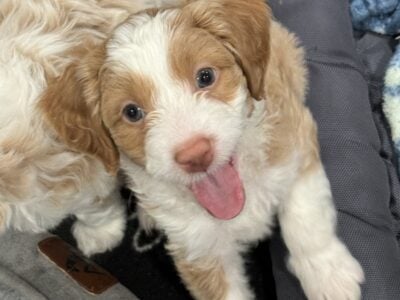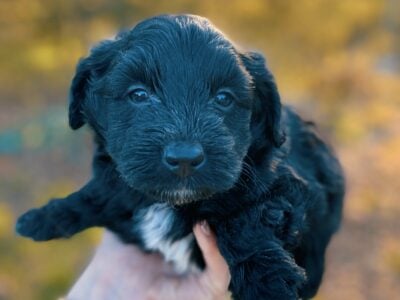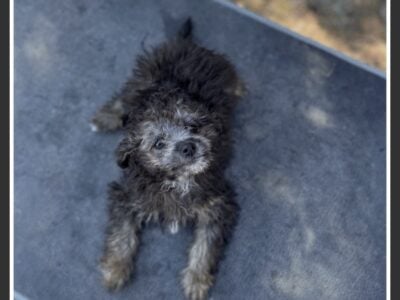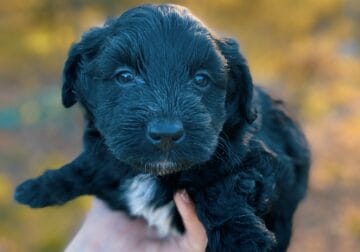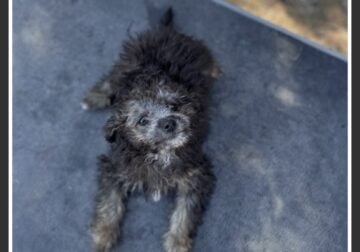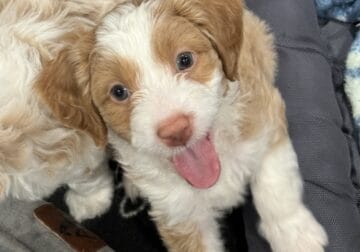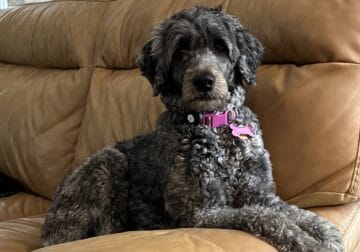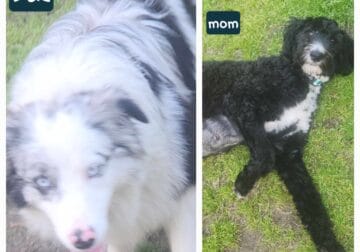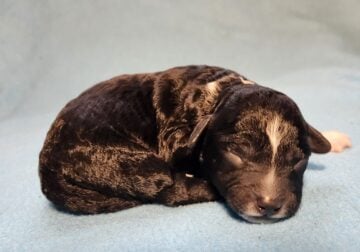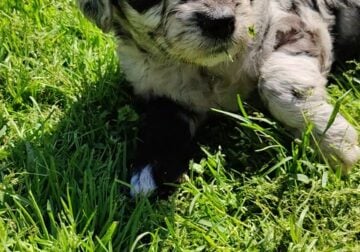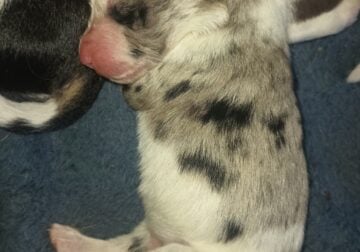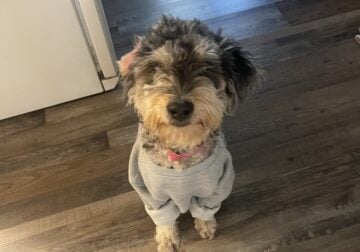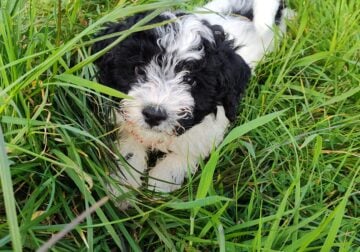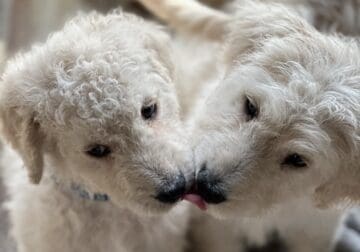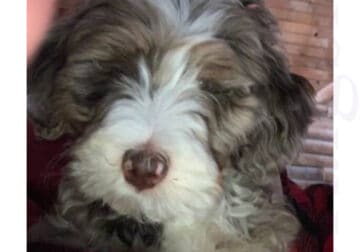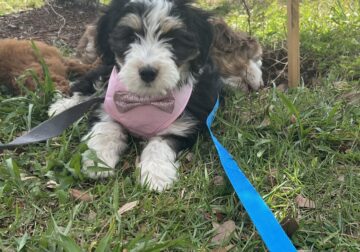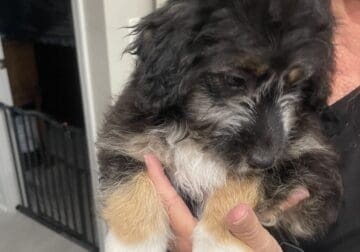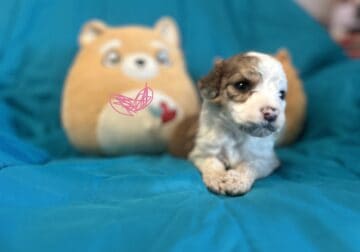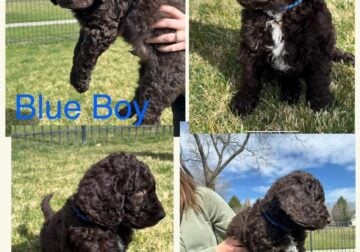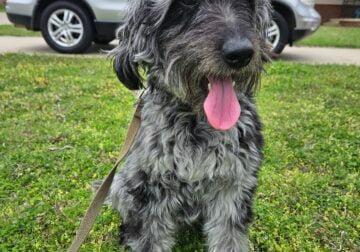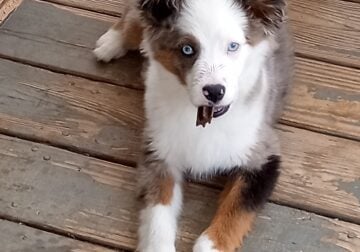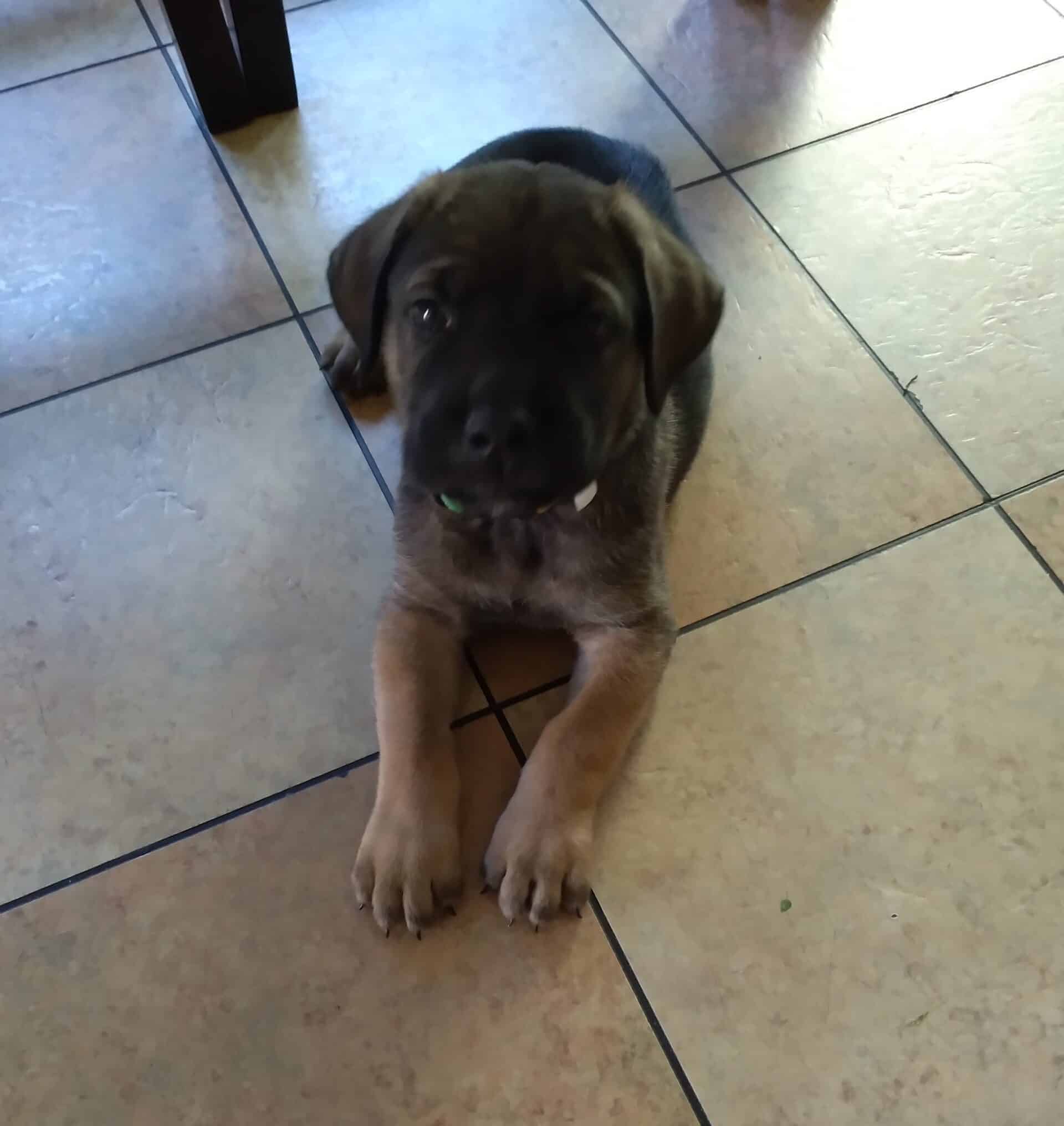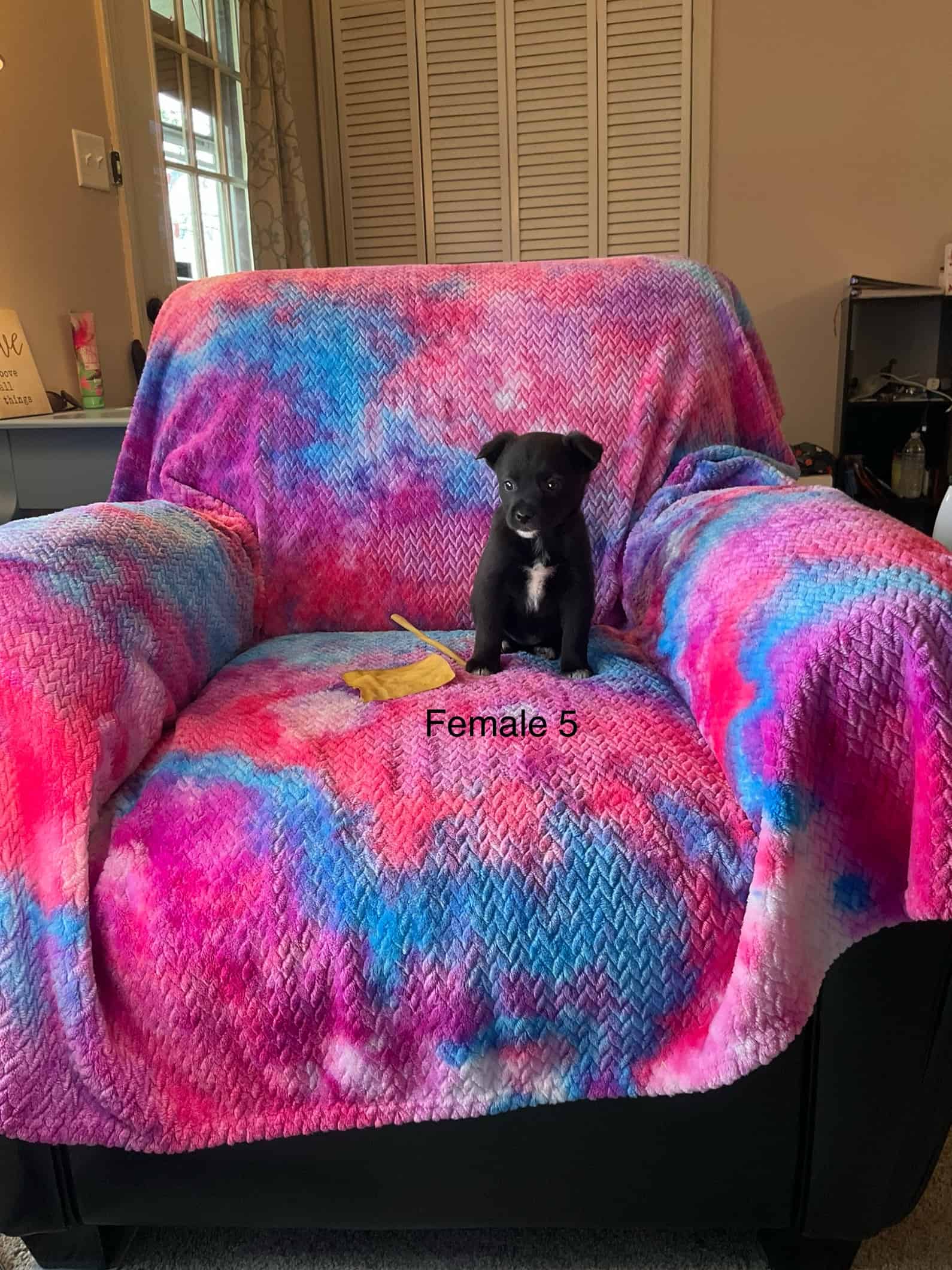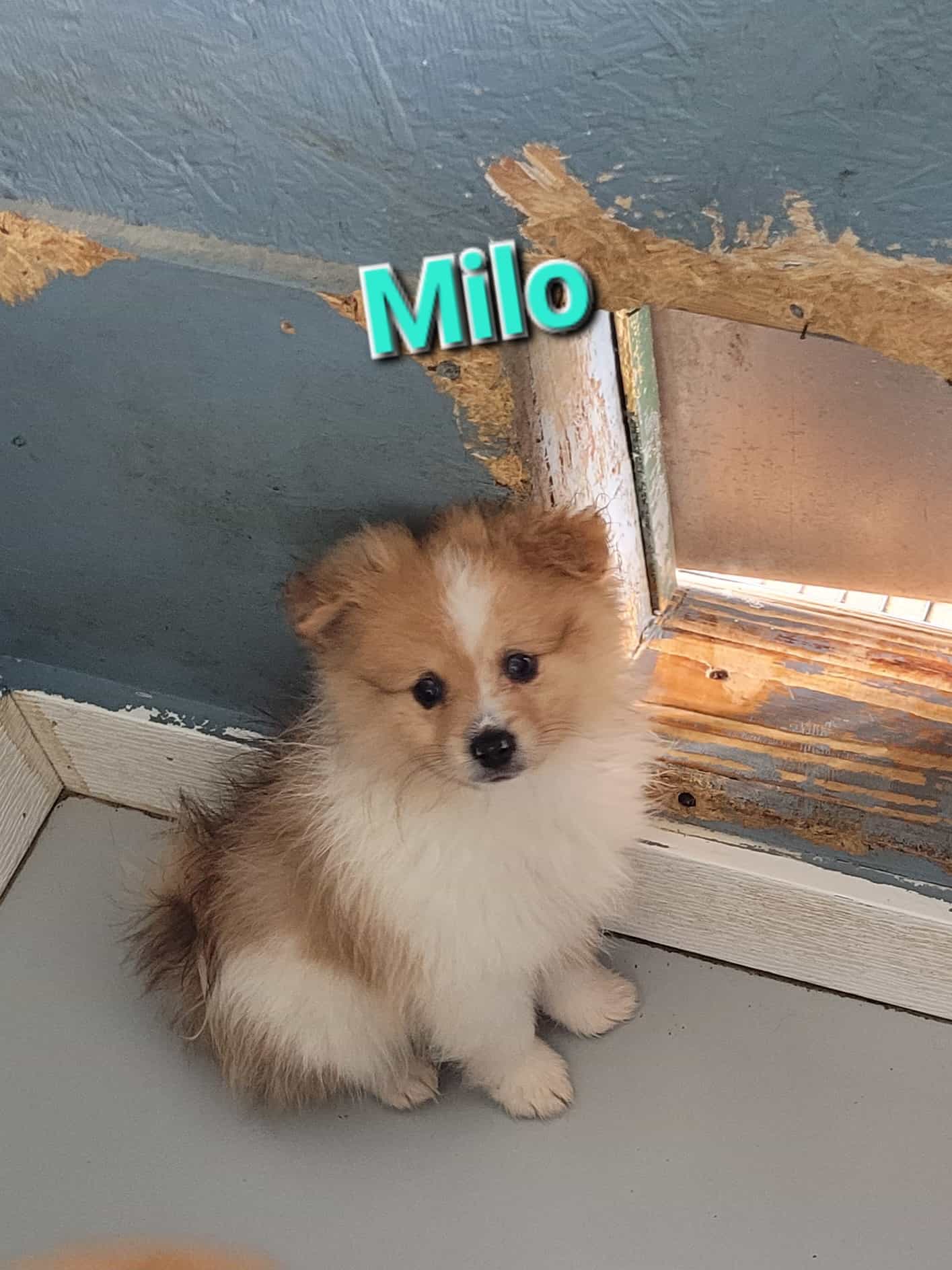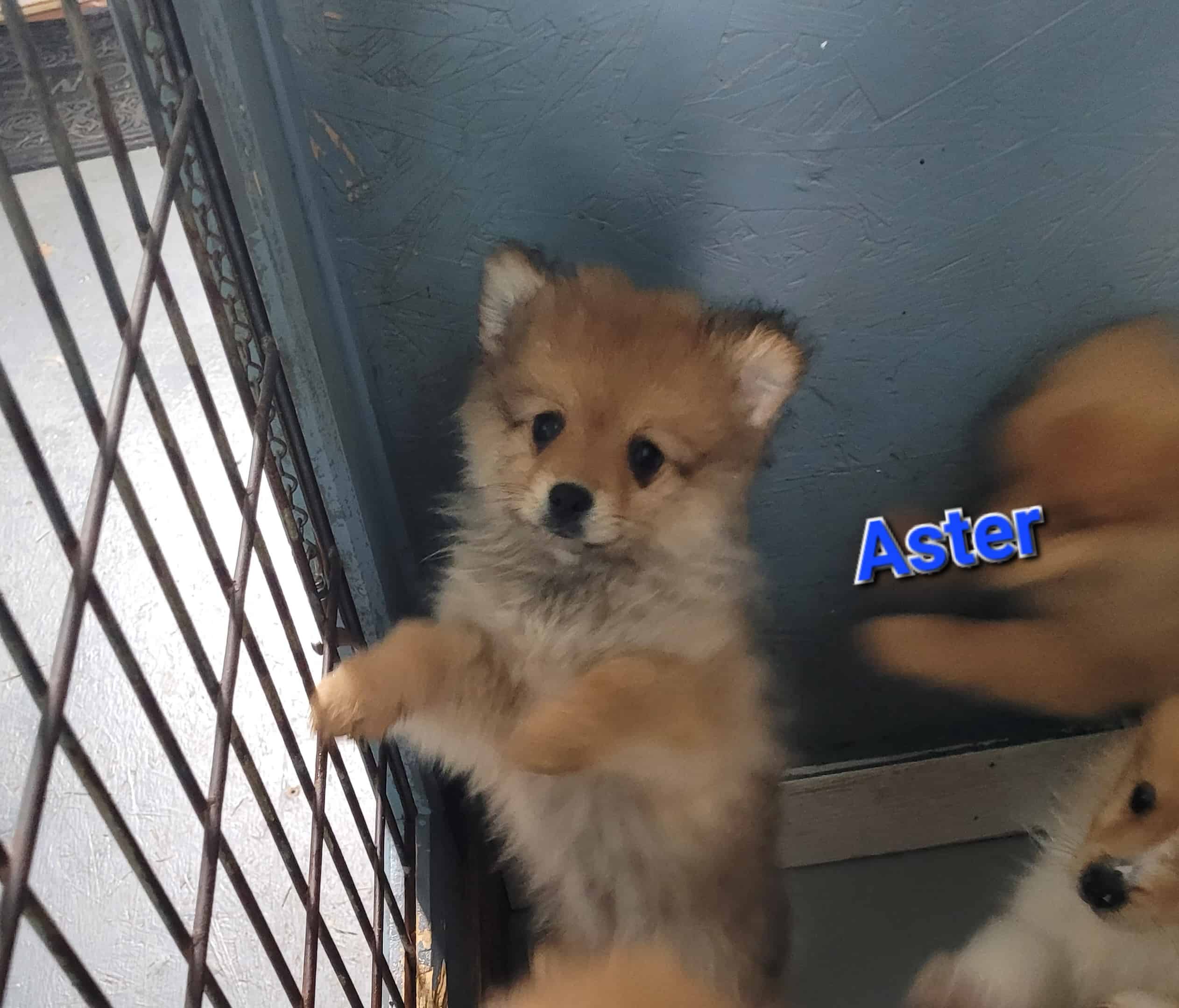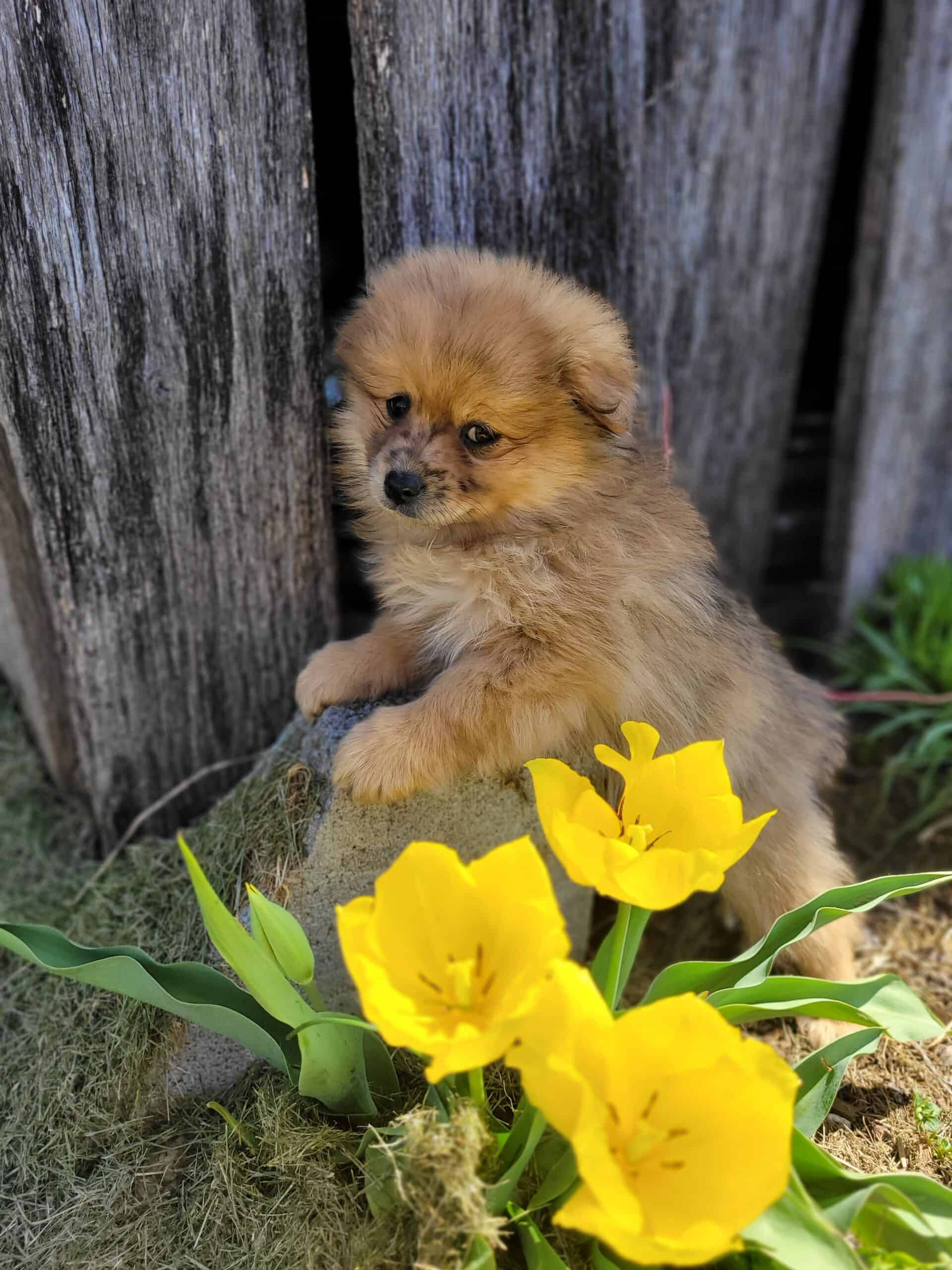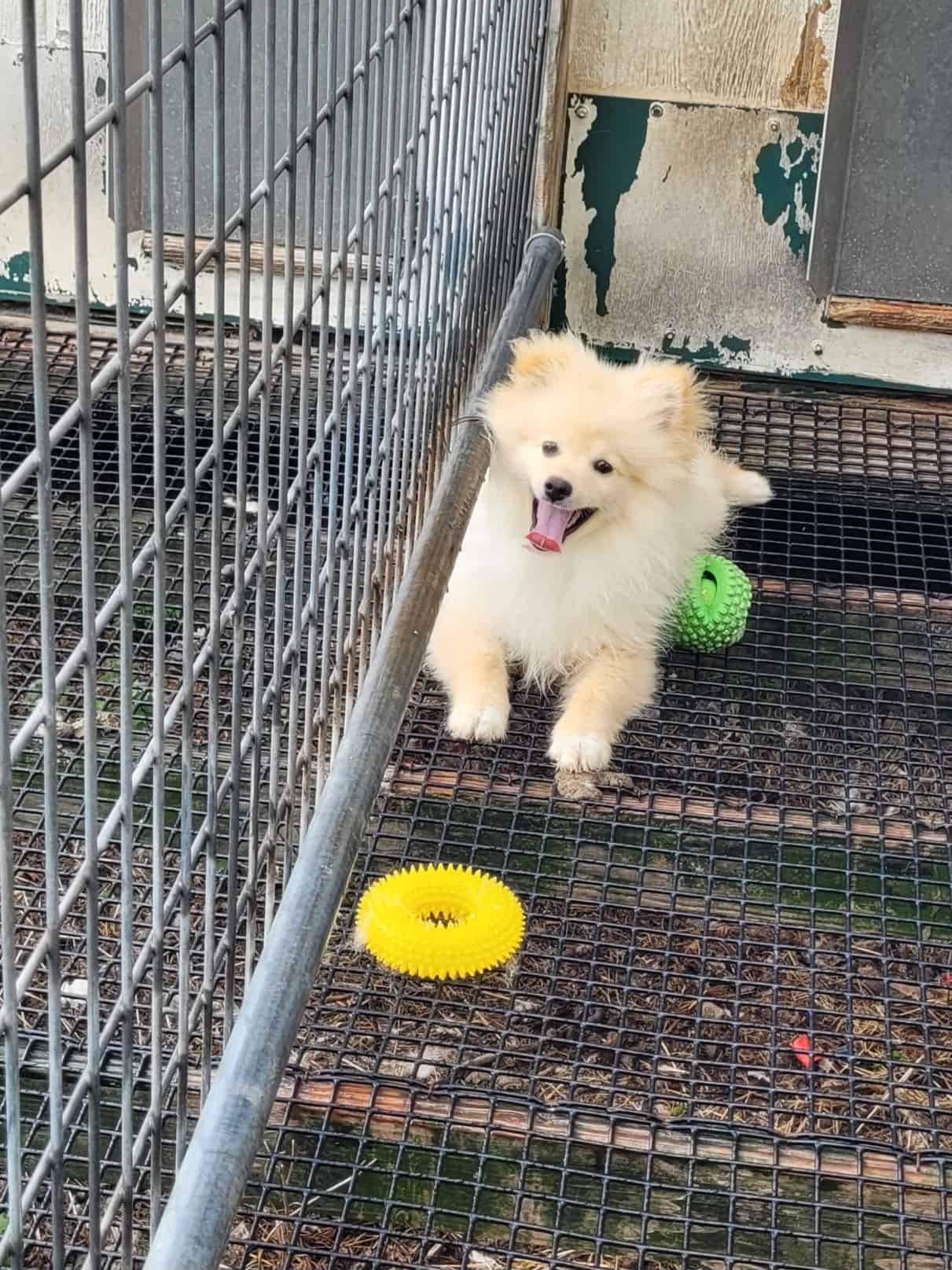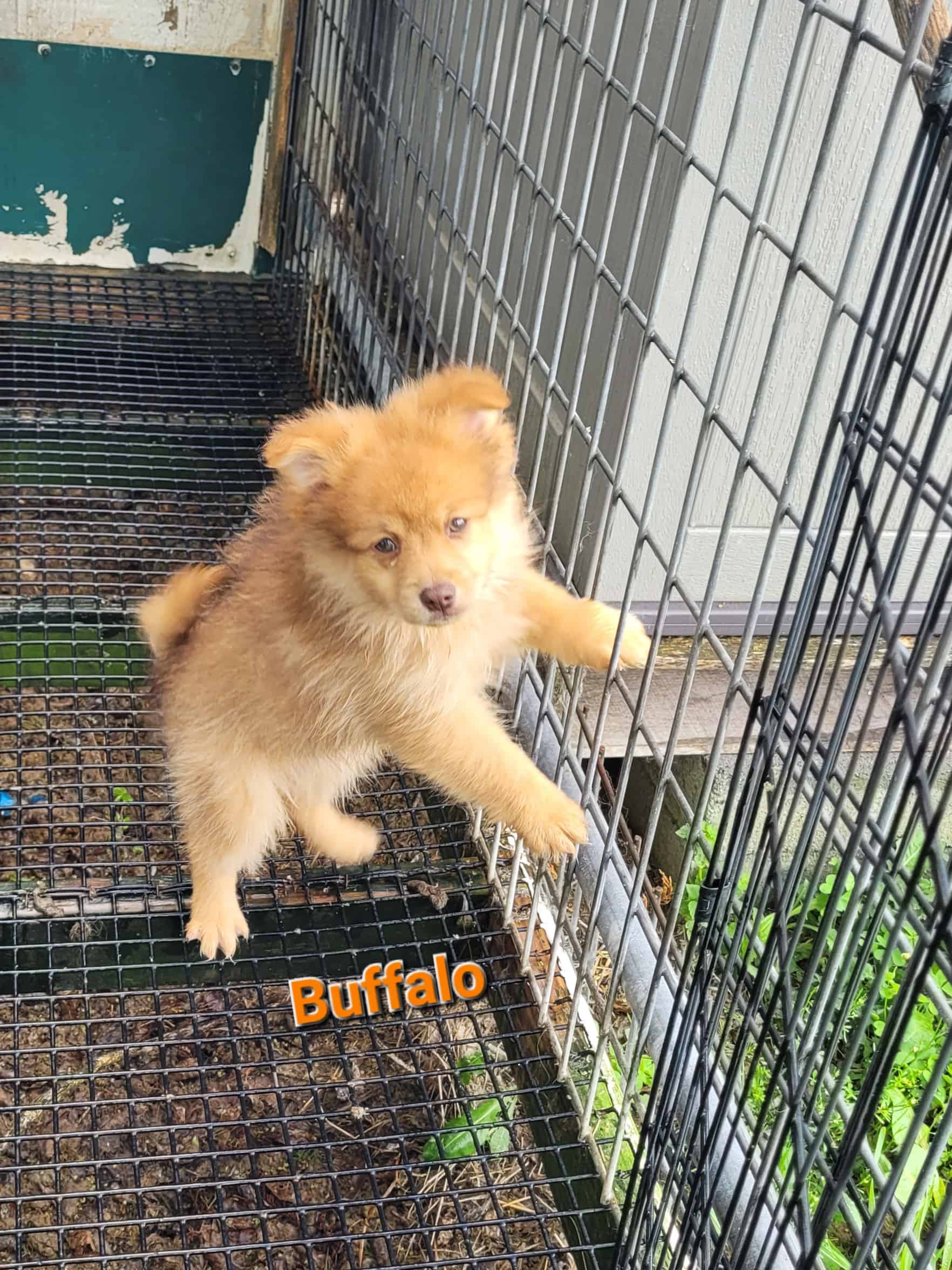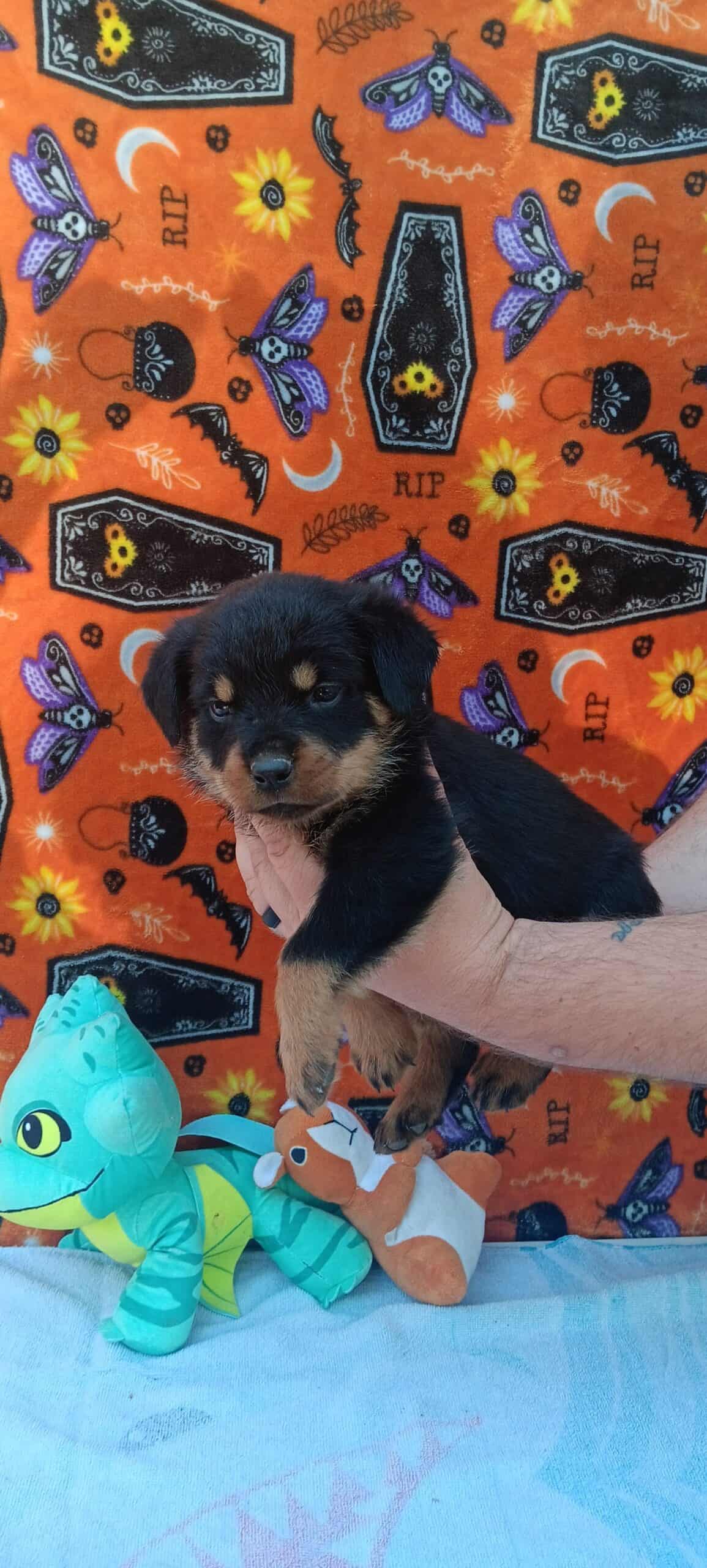Aussiedoodle for Sale: A New Age in Hypoallergenic Companion Dogs
An Aussiedoodle is a small or medium designer dog desirable for its loyalty, loving nature, and often hypoallergenic coat. Aussiedoodle puppies for sale come in a myriad of striking and unusual colors and different coat textures. Ideal for active families, Aussiedoodles make excellent therapy dogs, companions, watchdogs, and hiking or running buddies.
Overview of Aussiedoodle for Sale
Aussiedoodles have a particular look and temperament that have contributed to their success and popularity. The consistency of their traits increases with multi-generation dogs.
General Appearance
Aussiedoodles, like other Doodles, usually look like Teddy bears. An Aussiedoodle typically has a round face and medium-sized, floppy ears. Her eyes are round with a lively, kind, and curious expression. She has a compact strong body, relatively deep chest, and muscular shoulders and hindquarters regardless of her size. An Aussiedoodle’s tail reaches the hocks, and she usually carries it up. Aussiedoodles are quick and athletic with a fluid, springy gait.
Background
Poodles are thought to have descended from water-retrieving curly-haired Barbets. The most prevalent expert opinions say the Poodle originated in Germany with further development in France in the 1600s. Australian Shepherds, on the other hand, may have originated from the Collies of the UK and perhaps old sheepherders of the Basques. The Western US, namely California, Colorado, Idaho, and Wyoming, was responsible for the breed’s development in the 1800s. There is a misconception that the Aussiedoodle originated from Australia, or the first puppy was born from an Australian Poodle. Australian Poodle was simply the name of the breed before fanciers changed it to Aussiedoodle. These designer dogs likely originated in the United States in the 2010s or 2020s after the Goldendoodle was well established. An Aussiedoodle is also called an Aussiepoo.
Coat
Aussiedoodles are unique in that fanciers describe several aspects of the coat. The coat can be curly like a purebred Poodle, double-coated and wavy like a full blood Aussie, or a mix of strong waves or loose curls. Flat-coated dogs have almost no curl or wave in their hair. On top of the varying textures, you can describe an Aussiedoodle’s coat as furnished or unfurnished. A furnished dog will have the desired scruffy face of many Doodles as well as fluffy feet. Unfurnished dogs have a uniform coat whether wavy or curly. Dogs with no furnishings are partially dominant over dogs that are furnished. This means if you mix genes between a furnished and unfurnished dog, you may get a puppy with weak furnishings, or shorter tufts on the face and feet. Sometimes you cannot tell weak furnishing on Aussiedoodle puppies for sale; they may look unfurnished until they reach two months or older.
Colors
Aussiedoodle colors represent the merging of the distinctive shades of the Aussie and the Poodle. This phenomenon results in some colors you will not see in the parent breeds.
- Red – Any shade from deep red to apricot to yellow-cream
- Bicolor – Base color of black, red, sable, silver, blue, or brown; white markings
- Tricolor – Black and tan or liver and tan, both variations with significant white markings
- Phantom – Black or liver base color with tan points
- Abstract – Black or brown base with white on toes and chest
- Sable – Black, brown, or merle base with light undertones; dog lightens to cream or white as an adult except for markings on the ears or face
- Parti – White base with blue, black, red, silver, brown, or merle spots
- Black
- Blue – Dilute black
- Silver – Progressive greying gene; puppy born dark and lightens
- Chocolate or liver
- Merle – Black or red base swirled with white; a black merle is known as a blue merle Aussiedoodle because the marbling of white and black makes the fur look blue or gray; hidden merles have a merle gene but do not show the characteristic markings
Temperament
Aussiedoodles are high-energy animated dogs. They are alert, engaging, and friendly. Aussiedoodles are also affectionate, and you can easily describe them as Velcro dogs since they do not like to be away from your side. Although welcoming to strangers, Aussiedoodles do make great watchdogs. These designer dogs are quite social and tend to get along well with other canines. They also enjoy children, being playful and tireless. You need to take extra care with Toy Aussiedoodles and young kids as these dogs are far more susceptible to injury than their larger and sturdier counterparts.
What is a Multi-Generational Dog?
A multigenerational Aussiedoodle results with the third-generation Aussiedoodle puppy. Multigenerational crosses have been famously used in many Poodle mixes to improve coat quality and ensure the repeatability of desirable traits. However, breeders rarely keep crossing Aussiedoodles because their coats do not become less variable. You still have the same gene combinations as you did when you bred the first two Aussiedoodles. Therefore, the most desired crosses will breed an Aussiedoodle back to a purebred Poodle.
The F Factor
Different generations of Aussiedoodles are assigned an F or filial designation. F1 refers to a puppy from the original hybrid cross of the Australian Shepherd with the Poodle. An F2 dog results from the cross of two F1 Aussiedoodles, the F3 from two F2 Aussiedoodles, and so on. Theoretically, by five or six such crossings, you are arriving near the level of creating a new dog breed. Back breeding gets a b denotation. Thus, an F1 Aussiedoodle crossed with a purebred Poodle produces an F1b Aussiedoodle. An F2b Aussiedoodle is an F2 Aussiedoodle that has been crossed back to a purebred Poodle. You can also cross an F1 dog with a purebred Australian Shepherd to get an F1b Aussiedoodle sometimes also referred to as a reverse F1b mix. A breeder has several options with an F1b dog. She or he can breed it to another F1b Aussiedoodle, a purebred Poodle, or an F2 dog. Each of these dogs represents a third-generation Aussiedoodle even though it never reached the level of F3. A multigenerational Aussiedoodle for sale tends to have a high percentage of Poodle blood.
Sizes of Aussiedoodles
There are three size classes for the Aussiedoodle. From largest to smallest are the Standard, Miniature, and Toy Aussiedoodle.
Standard Aussiedoodle
Standard Aussiedoodles are medium-sized dogs. They are the product of the match between the Standard Poodle and Australian Shepherd. Dogs can range widely in size from 15 to 25 inches tall at the shoulders and 40 to 70 pounds.
Mini Aussiedoodle
The small size of a Mini Aussiedoodle for sale has great appeal to owners who live in the city or an apartment. These miniature replicas of the Standard Aussiedoodle still need plenty of exercise, but many owners prefer the smaller dogs. Breeders obtain Miniature Aussiedoodles by crossing the Miniature or Toy Poodle with the Miniature Australian Shepherd. Results are somewhat predictable unlike you see in other attempts to produce miniatures from a medium to large breed. A Mini Aussiedoodle full grown should be 10 to 15 inches tall and weigh 10 to 25 pounds. Keep in mind when you look for a Mini Aussiedoodle for sale you will find sizes that can go up to 18 inches tall and 45 pounds. You could still classify your dog as a Miniature Aussiedoodle depending on its parents. When dealing with this hybrid dog, the size separations are not as clear-cut as for purebreds.
Toy Aussiedoodle
Toy Aussiedoodles are tiny at only 10 inches tall and four to twelve pounds. Puppies on the small end of the spectrum can suffer from the same problems as other Teacups. If a Toy Aussiedoodle is a dog that appeals to you, make sure to go through reputable breeders who place the health of their pups above other considerations like size and coat color.
Grooming
How much time you need to dedicate to grooming your Aussiedoodle will depend on whether she inherits a wavy or a curly coat. The curlier your dog’s hair, the more time you will need to spend on brushing her fur. Tight curls require daily brushing to prevent snarling. With loose curls, you can get away with brushing your dog every other day or perhaps three times a week. If your Aussiedoodle has wavy fur, you may need to only brush the hair once or twice a week. Aussiedoodles generally need a bath every six to twelve weeks. Mild shampoos work best, and always brush the hair when it is dry. Brushing your dog before a bath greatly helps prevent tangles when you massage the shampoo into his fur. Your grooming routine will also encompass other tasks.
- Brush teeth – Use canine-appropriate toothpaste and brush; start when your puppy is young
- Face – Wipe the mucus away from your dog’s eyes daily with a soft damp cloth
- Nails – Trim every 6 to 8 weeks or you can use a Dremel tool to file them every 4 to 6 weeks
- Ears – Check for redness or other signs of infection at least every other day; check ears if your dog is scratching them; clean ears weekly
Lifespan
With responsible breeding, your Aussiedoodle should be a healthy dog. Aussiedoodles have a life expectancy of 10 to 15 years.
Food Requirements
Aussiedoodle puppies for sale usually come home between nine and twelve weeks of age. The younger your pup is when you bring him home, the more often you will need to feed him. Young puppies under six weeks should eat free choice, but at eight weeks old they are still feeding four times a day. At 12 weeks of age, you may decrease your puppy’s feedings to three meals a day. Some dogs will eat four times a day up to six months old. Adults should still eat their food in two or more portions in 24 hours to help prevent bloat. Aussiedoodles need animal protein and fats in their diets. Premium diets have meat as a major portion of the ingredients but often substitute plant oils for animal-sourced fats with success. Grain-free diets remain highly debated, and you can discuss such options with your veterinarian to help make a final determination. Raw and homemade dog foods have received much attention with commercial options becoming more available than ever. Your veterinarian or a nutritionist is an excellent consultant on choosing appropriate fresh food for your dog. Aussiedoodles require two to five cups of food daily depending on activity level, working status, health, and age.
Exercise
You can cater your exercise program to your dog’s size. A Standard Aussiedoodle needs 90 to 120 minutes of exercise daily. A Mini Aussiedoodle requires about 60 to 90 minutes of daily exercise and a Toy 30 to 40 minutes each day. Dogs benefit most if you break up your dog’s workouts into two sessions. Puppies, to guard their growing bones and loose joints, should get about five minutes of organized exercise per month of age twice a day. Pup will cover any gaps in activity with play. Training and socializing your puppy will substitute for the exercise she cannot yet safely engage in.
Training
You should begin training your Aussiedoodle as soon as he arrives home, even if he is only seven weeks old. Pups can engage in short sessions whereby you are instilling basic obedience such as “sit’ and “down.” Early training makes future interactions with your dog much easier. Part of your training should involve socialization as much as you can do before your pup is fully vaccinated. If you acquire an adult Aussiedoodle from a rescue or shelter, he may already have basic training. You may need to improve his social skills and try to eliminate a few bad habits. Considering how intelligent Poodles are, it is no surprise that Aussiedoodles tend to be smart and easy to train. They can accumulate a massive vocabulary. Training drawbacks are sensitivity from the Poodle and independence from the Australian Shepherd. You can overcome most problems through consistency and a strong positive reward system. Despite being consistent, you must avoid repetition or lack of imagination in your training methods. Aussiedoodle can easily become bored, causing them to disengage.
